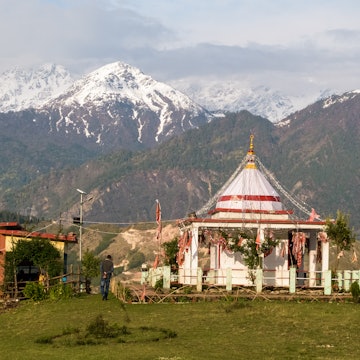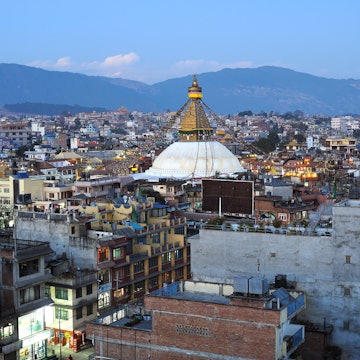

Lakshman Jhula suspension bridge across the Ganges River in Rishikesh, Uttarakhand, India. Ashish Chandra for Lonely Planet
Think Rishikesh, think yoga. This is the Downward Dog capital of the world, famed for meditation centers once patronized by The Beatles and mystical ashrams where flexible folk gather for training and practice. A pilgrimmage stop located on the banks of the Ganges, which flows from the Himalaya, this town also heralds something else – adventure.
Today Rishikesh is one of the favored gateways to the soaring peaks of Uttarakhand. Some of the most iconic corners of the Indian Himalaya await there, from the meadows of the Valley of Flowers to the gnarled top of Nanda Devi.
The low Himalaya around Rishikesh are great for first-time trekkers looking to test themselves on a multi-day itinerary. There are plenty of routes that clock up relatively low altitude counts on generally easy terrain, all without compromising on views of ice-carved peaks and whatnot. But you can also mosey around the ghats and ashrams of town, clambering up to temples and skirting waterfalls in the sal forests.
Here are our top 6 recommended hikes in Rishikesh.
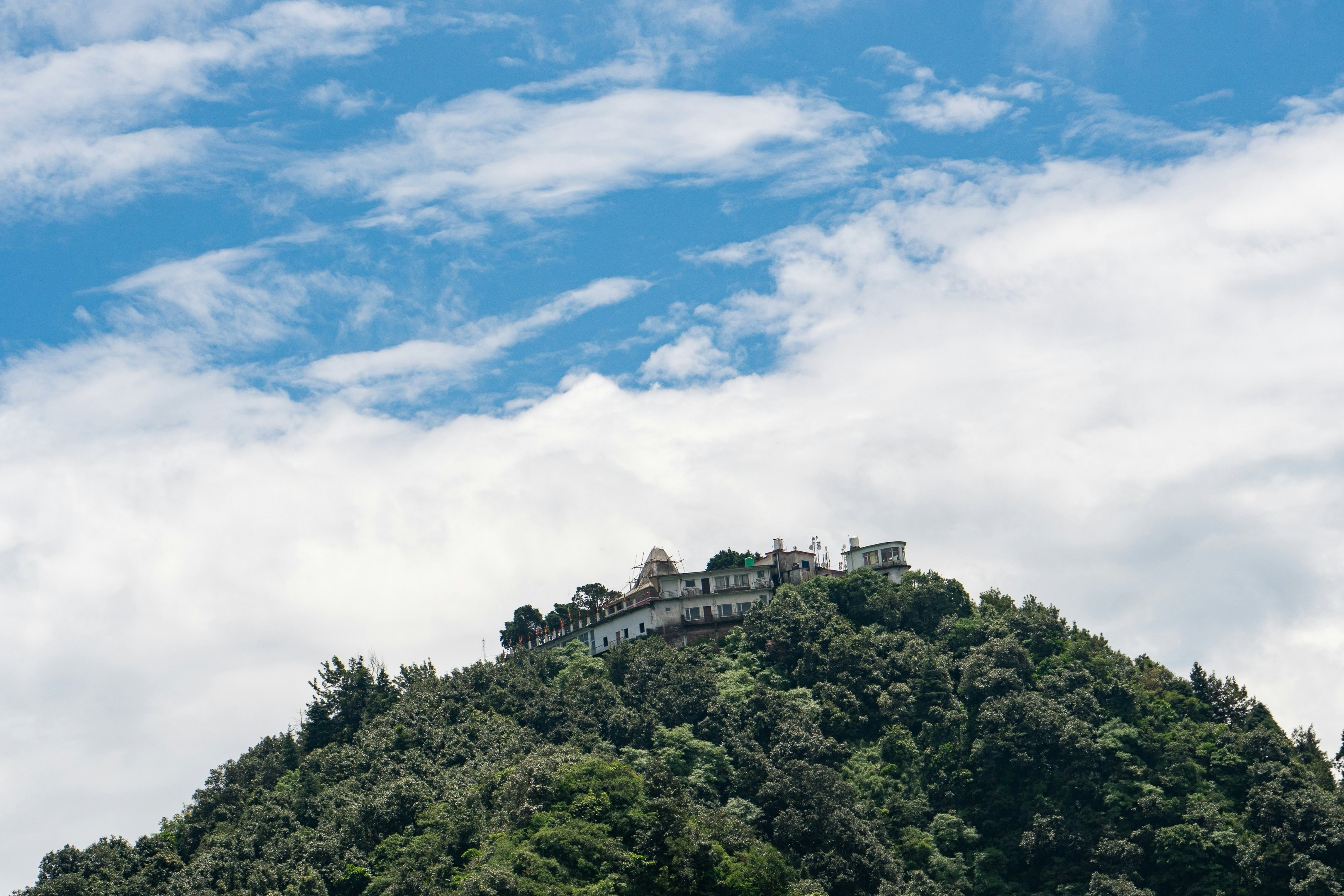
1. Kunjapuri Temple Trek (to Neer Garh Waterfall)
Best day trek
Distance: 13km (8 miles)
Estimated time to complete: Six to eight hours
Level of difficulty: Moderate
If you only have time to fit in a one-day hike in Rishikesh, make it the Kunjapuri Temple Trek. This is a well-trodden path for good reason. You’ll be treated to a rare sighting of the snow-tipped tops of the Garhwal Himalaya before delving into the sal forests and descending all the way to the Neer Garh Waterfall, where you can cool off beside the mountain stream.
This is usually advertised as a sunrise trek, but take that with a pinch of pink Himalayan salt. Yes, you’ll leave Rishikesh early but only to drive right up to the shrine, where groups often do morning yoga as the sun peers over the mountains. That's when the trek actually begins, snaking down into the lush Neer Valley over the course of the next several hours. It's possible to swim at the waterfall but watch your step and don't expect paradise – easy road access and an array of ramshackle kitchens means it always has a crowd.
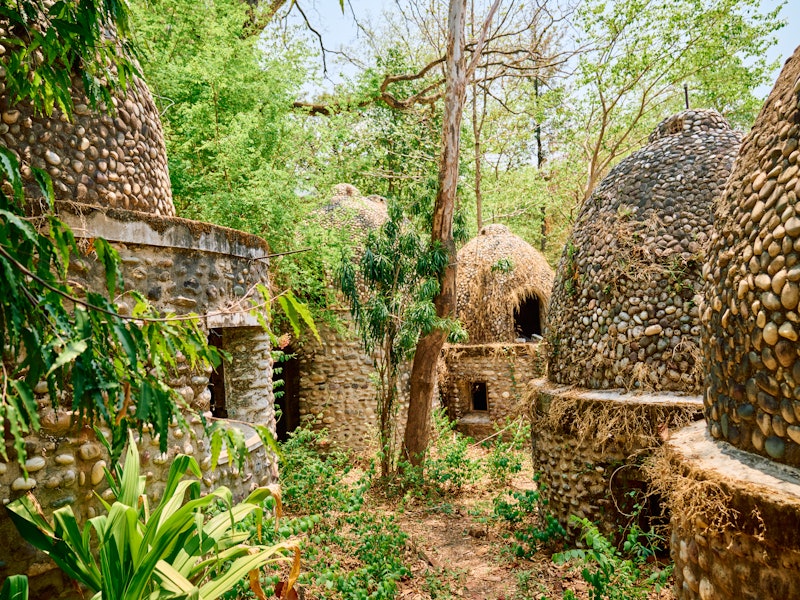
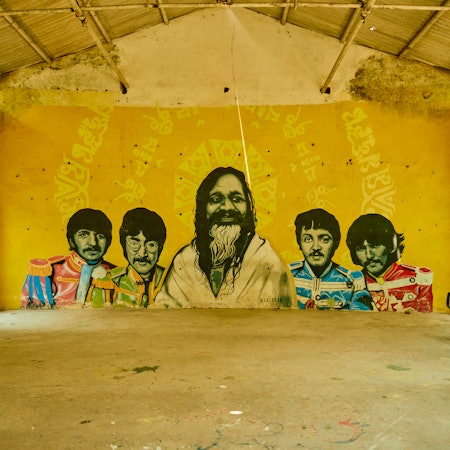
2. Lakshman Jhula Road
Best cultural hike
Distance: 5.4km (3.4 miles)
Estimated time to complete: Half a day
Level of difficulty: Easy
This stroll down the eastern banks of the Ganges is more of a whistlestop tour of Rishikesh's main sights than a full-on hike. It swaps big ascents for crowds of pilgrims, following the river with the ghats on one side and the famous ashrams on the other.
Assuming you're staying in the backpacker enclave of Tapovan, head down to the river to hitch the ferry across. (At time of writing, the iconic Lakshman Jhula suspension bridge is shut for construction.) Head south through the hubbub of jewelry stores, clothing emporiums and veggie cafés. Soon, the path veers right to follow the river and wiggles between the occasional painted shrine and meditating sadhu.
Expect crowds as you come to the Ram Jhula, a bridge where covered arcades filled with thali houses converge on the bigger ashrams, all abuzz with street hawkers and devotees dripping with Ganges holy water. Your route continues on all the way to the abandoned Beatles Ashram, to finish where the Fab Four visited in 1968.
Planning tip: Don't bother with a packed lunch. This walk goes through the heart of the ashram quarter of Rishikesh, where there are stacks of places selling momo (dumplings) and street food.
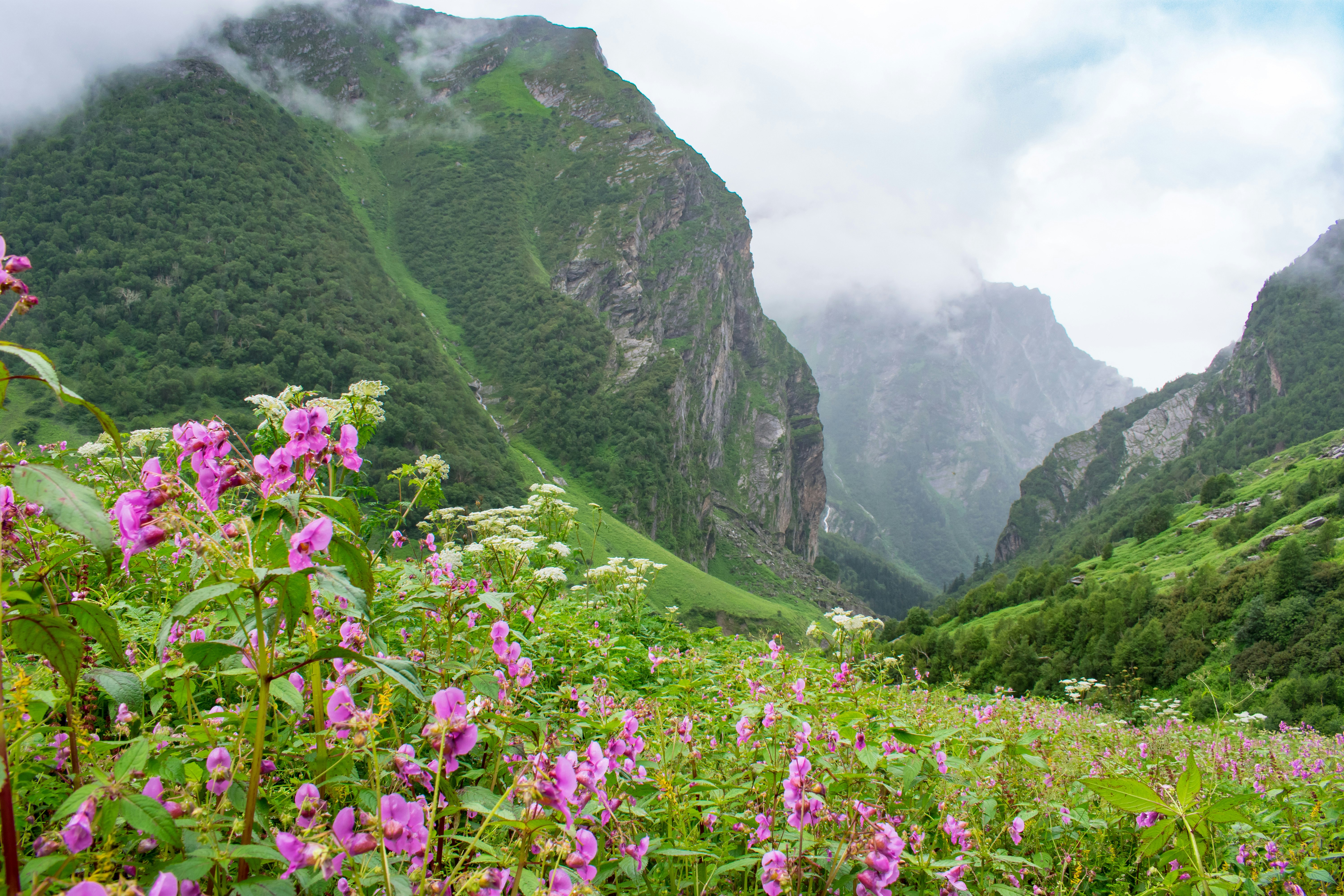
3. Valley of Flowers Trek
Best monsoon trek
Distance: 16-38km (10-23 miles)
Estimated time to complete: Up to six days
Level of difficulty: Moderate
Under the watchful gaze of 6700-meter-high (21,981ft) Gauri Parbat, the Valley of Flowers is where the Zanskar sub-ranges meet the high Himalaya of Uttarakhand. The story goes that a wandering expedition led by British mountaineer Frank Smythe entered the valley by accident, only to be greeted by carpets of blooming wildflowers on either side of the Pushpawati River. Smythe duly dubbed it the Valley of Flowers and trekkers now flock here for the symphony of rhododendrons, poppies, Himalayan bell flowers, morning dew and orchids that bursts into life with the coming of the monsoon.
It's at least a 12-hour drive to Govindghat – the gateway to the Valley of Flowers – from Rishikesh, so hiking tours usually leave in the very early hours. Most groups spend a night in Govindghat itself and then enter the valley via the village of Ghangaria. The trails fork just outside of town. Go north to enter the valley proper for those kaleidoscopic displays of flora below the snow-shouldered peaks. Branch eastward onto a thigh-busting zigzag route to reach the mystical Hem Kund shrine, a sacred pilgrimage destination for Sikhs.
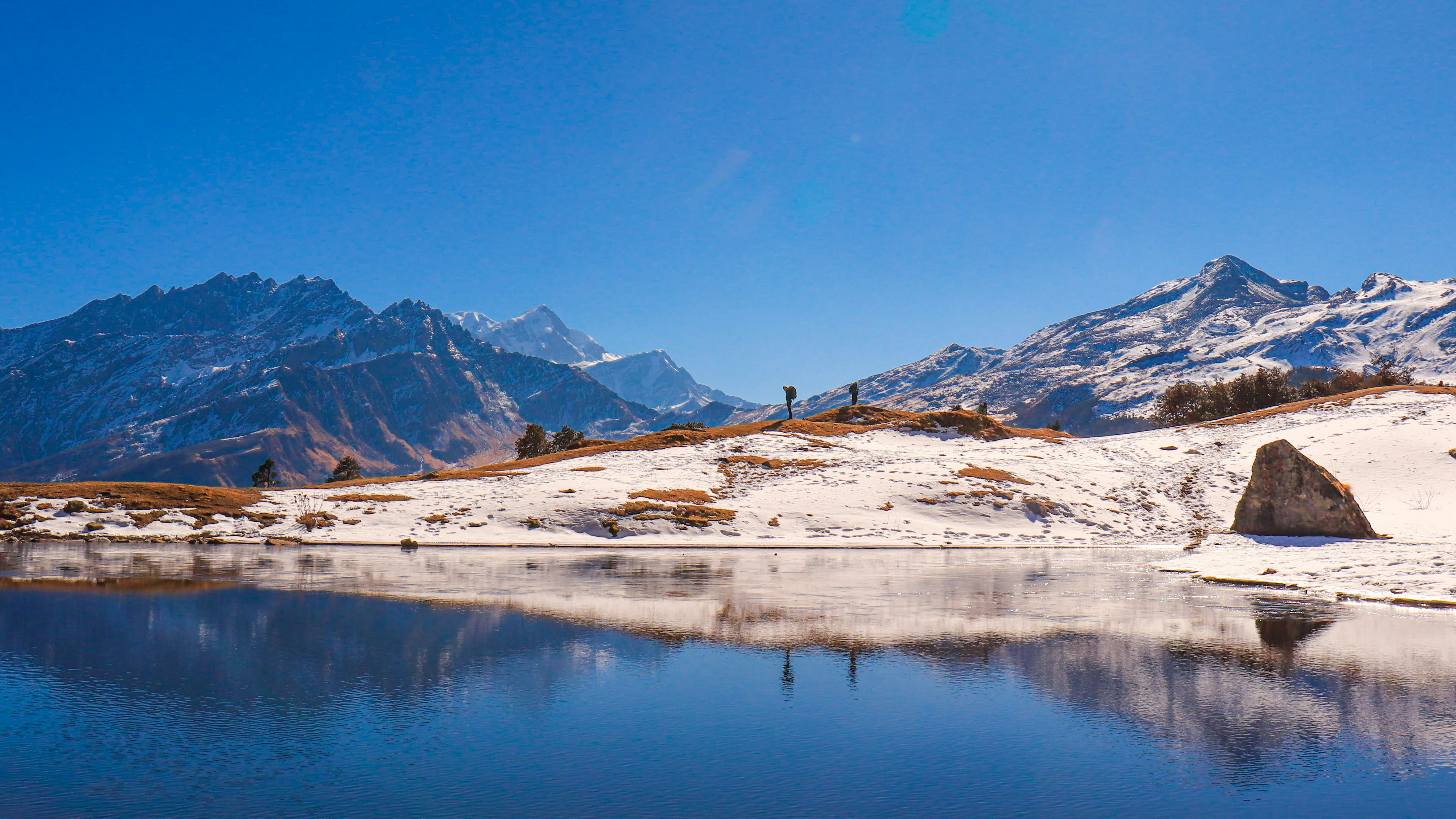
4. Kuari Pass Trek
Best winter trek
Distance: 27km (16.7 miles)
Estimated time to complete: Usually five days
Level of difficulty: Hard
The five-day trek to the Kuari Pass is among the most thrilling in all of Uttarakhand. It's a chance to come face-to-face with the shark-fin colossus of Nanda Devi, India's second-highest mountain. Views of its 7817-meter (23,580ft) slopes are particularly spectacular from the meadows of Gorson Bugyal on the initial days of the trek (or final, depending which way around you hike), but the massifs of Hathi Ghoda and Dunagiri – both twisted, snow-capped and quintessentially Himalayan – offer equally dramatic backdrops on other sections.
Auli or Joshimath are the two most popular starting points, but some itineraries begin at the hamlet of Tugasi, skirting the pass in a counterclockwise direction. Expect a long drive of at least 10 hours to get to the trailhead from Rishikesh.
The Kuari Pass Trek stands out among the high Himalayan hikes on this list in that it can be done throughout the winter months, when the lush meadows are hidden beneath thick cushions of snow. You’ll need thermals and proper winter gear, but a winter hike is a unique experience that showcases these great peaks at their harshest.
Planning tip: The Kuari is a different beast in winter compared to summer. You'll need very good thermal gear and experience trekking snowfields.
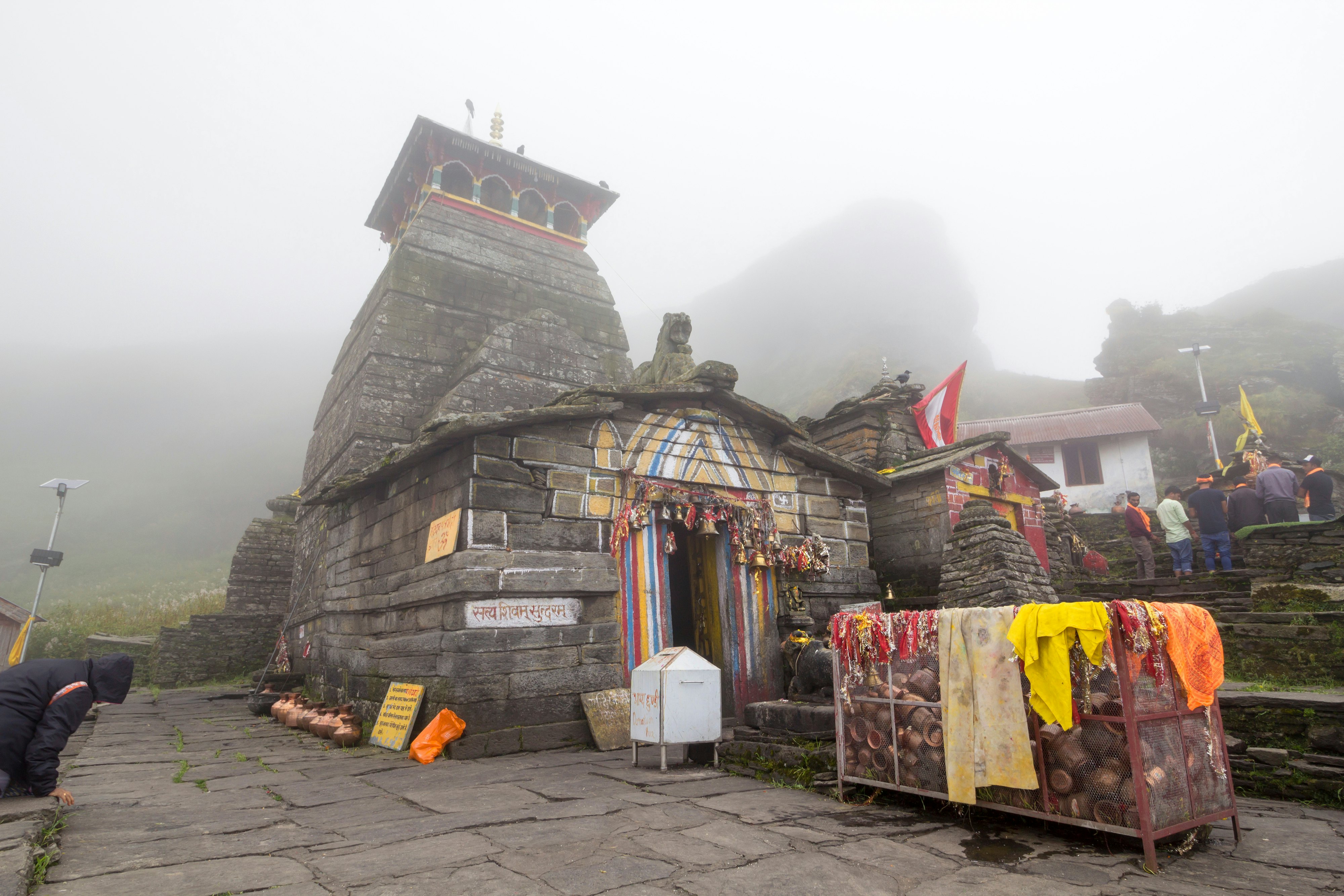
5. Chopta Chandrashila
Best multi-day trek for beginners
Distance: 10km (6 miles)
Estimated time to complete: Three days but with only one day of hiking
Level of difficulty: Easy to moderate
The hike up the relatively modest sub-4000-meter (13,000ft) peak of Chandrashila will only take a day but it's a hefty drive from Rishikesh to the hill station of Chopta and the trailhead, some 130 miles to the northeast. For that reason, it's normal to complete this one as part of a three-day itinerary, with transfers to and from your hotel included on either side of a leg-burning up-and-back of around six miles.
The initial section follows a well-worn pilgrimage route to the Tungnath Mandir, the highest-altitude Shiva temple on the planet. You likely won't be alone. Not only does the shrine draw a steady stream of pilgrims throughout the summer months, but Chandrashila itself is oft-hailed as one of the best places to watch the sunrise over Nanda Devi and the Garhwal Himalaya. Set out very early if you want to catch that, making the most of the well-laid flagstone path that hairpins up the western flank of the mountain. There's a little bit of everything here: stirring Hindu temples, rhododendron forests, sweeps of pine trees and visions of the high Himalaya to the north.
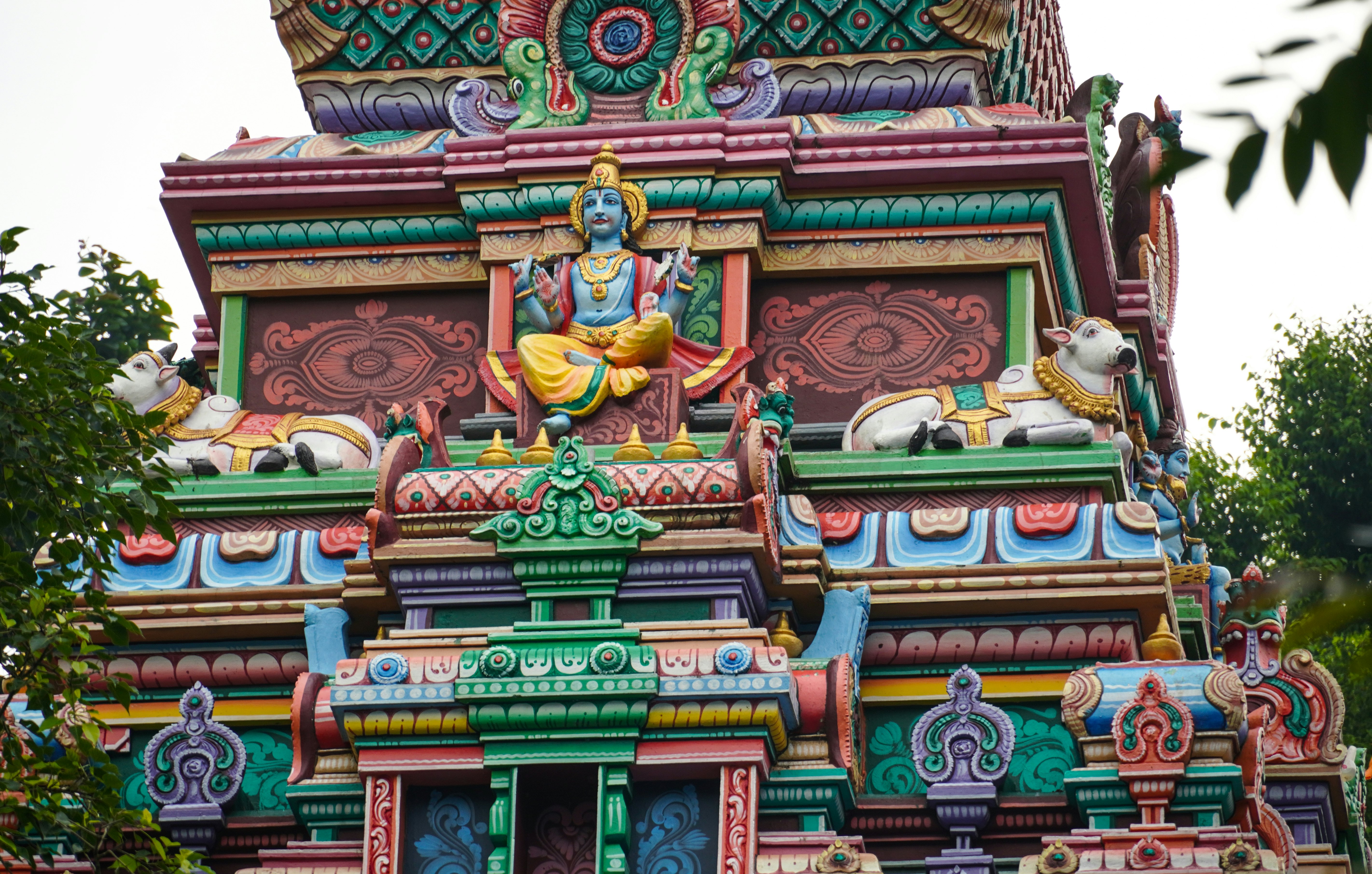
6. Neelkanth Mahadev
Best temple hike
Distance: 8.2km (5 miles)
Estimated time to complete: Four to six hours
Level of difficulty: Moderate to hard
Taking you from the holy ghats on the Ganges to the Neelkanth Mahadev Temple, where according to Hindu mythology, Lord Shiva saved the world by imbibing poison, this is a thigh-burning climb that rewards you with fantastic views over Rishikesh. There's something like 792 meters (2600ft) of elevation gain involved in the ascent. Couple that with the searing Indian sun and troupes of mischievous monkeys that demand dodging on the way up, and you've got a real challenge on your hands. Luckily, there are always chaiwalas (tea vendors) and pilgrims on the route to offer words of encouragement, not to mention soothing cups of masala tea.
The best panoramas of the city below appear suddenly when there are gaps in the trees. Look for the Ram Jhula bridge right in front and the sprawl of modern Rishikesh to the south. You'll know when you're near the top because the paved walking path widens just a little and yoga ashrams once again pop up on the sides. The temple is hard to miss thanks to the layered gopuram (gateway tower) and its bright friezes depicting scenes from the Hindu epics. From there, it's possible to catch a ride back to Tapovan if you don’t feel like hiking the return leg.
Planning tip: Pack all your food away. The langurs and macaques on this route are seasoned thieves, always hungry and very opportunistic.
Top tips for hiking in Rishikesh
Book a guided trek if you want to do multi-day hikes in the higher Himalaya around Rishikesh. Not only will this help with navigation but it also eases the bureaucracy involved in sorting permits for national parks and reserves.
Choose your trip dates carefully. Seasons are everything here: the monsoon can wash out many trails and winter can close the high passes, though there are still many treks in Rishikesh that can be done year-round.
Always pack enough water. Even in the foothills of the Himalaya, the Indian sun can be relentless.
Consider if you need to add in a day at higher altitude to prepare for your chosen route. Generally speaking, day hikes that leave from Rishikesh don't require acclimatization. Not so with treks deeper in the Himalaya that include long transfers first.









